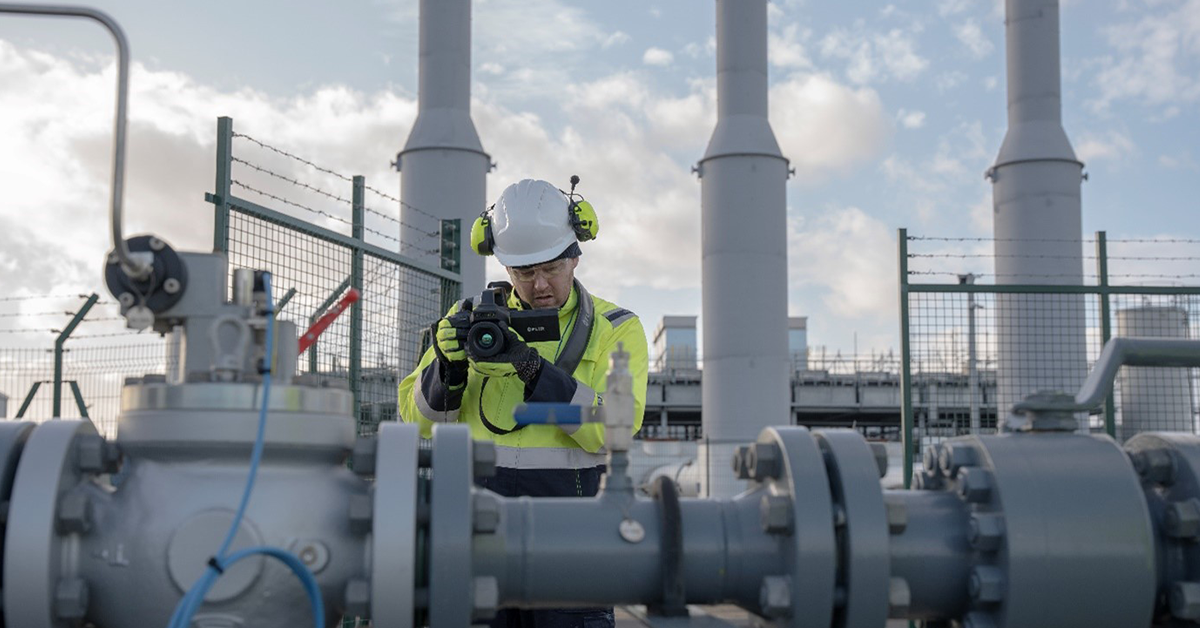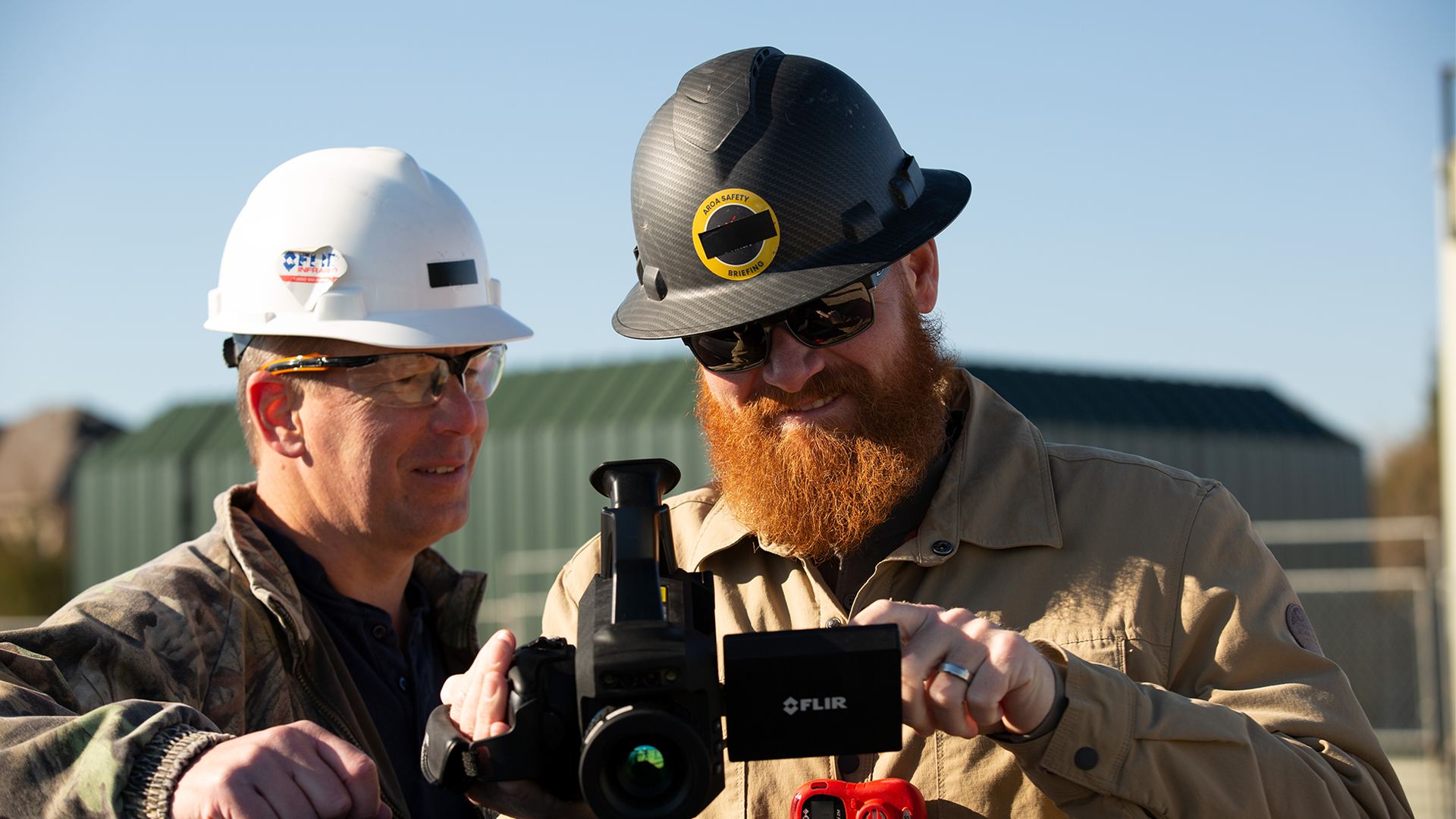Quantitative Optical Gas Imaging for Hydrocarbon Gas Leaks

Quantitative Optical Gas Imaging (QOGI) is a unique technology consisting of a proprietary algorithm used with a cooled optical gas imaging camera for hydrocarbon or VOC gas leak detection to measure gas emissions by flow or concentration. While FLIR only introduced QOGI technology a short time ago, there are several advancements in recent years including:
- Quantification in-camera with the FLIR G-Series hydrocarbon cameras
- Advanced features in the QL320 like image stabilization and superemitter calibration capabilities
- Research on validation of QOGI as a technology
Learn about everything from the basics of optical gas imaging and why this technology is the most efficient technology to measure gas emissions, to the newest advancements in the QOGI solutions from FLIR in this webinar.

direct chapter links: QOGI for Hydrocarbons Webinar
What is OGI and why use the technology?
Questions and Answers
IS QOGI CURRENTLY USED AS A REGULATORY ENFORCEMENT TOOL IN THE US?
Currently, no U.S. regulatory driver exists for QOGI methods. As industry operators strive to be more responsible stewards of the environments in which they operate, QOGI is used to conduct field studies and determine emissions for internal purposes, leaving each company free to determine the benefits of QOGI and to deploy it accordingly.
HAS THE QOGI METHOD BEEN VETTED?
QOGI is an emerging technology, in development since 2014, and it has been subjected to extensive validation testing, including blind testing with known release rates. Some of the publicly available testing results include:
- A study conducted by a European industry group – which includes most of the oil companies operating in Europe – dedicated to researching environmental issues relevant to the oil industry. This study concluded that QOGI significantly outperforms U.S. EPA Method 21 in terms of result accuracy.
- A comprehensive field study campaign to assess various methane measurement and detection technologies where QOGI was tested on the capabilities and measurement accuracy. The result of the testing was that QOGI is “effective at providing comprehensive estimates of gas emissions at an aggregate level” with an aggregate error of only 18% over nearly 100 testing locations.
NOTE: Both of these studies were sponsored by the industry.
THE FLIR QL320 ASKS YOU TO SELECT ONE GAS TO QUANTIFY. WHAT IF THE GAS STREAM CONTAINS MULTIPLE COMPOUNDS?
It bears mention that the U.S.’ EPA-approved Method 21 shares this limitation; where QOGI shines is how it addresses this uncertainty.
Using a flame ionization detector (FID) under Method 21, you typically calibrate the device to a pure gas, then measure process streams. The gas composition can change the FID response significantly but, generally, this error is accepted, even though it can introduce an error of 200% or more to Method 21. Most facilities don’t calibrate their FID to each specific process stream (a corrective action); they simply accept the concentration number (measured as a pure calibration gas). Method 21 offers no recourse to retroactively adjust the result.
The FLIR QL320 makes it easy to correct for the gas mixture and adds flexibility to the task. Further, the correction is fundamental, meaning it is not dependent on the specific instrument (as with an FID and Method 21). The FLIR QL320 allows users to adjust for the gas mixture after the fact, and your adjustment will be applicable to any FLIR QL320 result applied to that process stream, on any given day or environmental conditions.
WHAT ARE THE MINIMUM AND MAXIMUM SIZE LEAKS THAT CAN BE SUCCESSFULLY QUANTIFIED WITH THE FLIR QL320?
The minimum size of a leak that can be quantified is a function of the ΔT (between ambient temperature near the gas and the background), the compound you are imaging, and the wind speed. FLIR’s QL320 system has demonstrated the ability to quantify propane leaks down to 0.1 l/min and methane leaks down to 0.3 l/min and up to 100 l/min and 300 l/min for propane and methane, respectively, with a ΔT of 5°C, a moderate wind speed and using the point or diffused release options.
A good general rule: if you can see the leak in normal mode, the system most likely can quantify it. If you must use high-sensitivity mode to see the leak, the FLIR QOGI technology may struggle to quantify it accurately.
For extremely high leak rates, the QL320 has a new superemitter option that expands the calibrated range from 250 to 50,000 l/min for methane.
WHAT IS THE MAXIMUM DISTANCE FROM THE LEAK SOURCE AT WHICH I CAN REPEATEDLY AND ACCURATELY USE THE QOGI METHOD?
The range and field of view (FOV) for the FLIR QL320 is dependent on the lens being used and leak type being measured. These ranges for diffused and point releases are:
- 23 mm (24° FOV): 5 to 54 feet
- 38 mm (14.5° FOV): 8 to 90 feet
- 92 mm (6° FOV): 20 to 210 feet
Whereas the distance ranges for the superemitter mode are:
- 23 mm (24° FOV): 110 to 260 feet
- 38 mm (14.5° FOV): 180 to 420 feet
- 92 mm (6° FOV): 440 to 1,000 feet
The overall distance will affect the repeatability and accuracy of quantification results (similar to temperature measurement with a camera), as there are fewer pixels to utilize when calculating the gas leak’s concentration length from a greater distance. Accordingly, when using FLIR QOGI technology at a greater distance, you will notice the plume extraction circle is considerably smaller.
WHAT IF I AM OPERATING IN A HAZARDOUS LOCATION AND WANT TO MEASURE A LEAK
With the QOGI in-camera available in the G-Series hydrocarbon camera models, you can easily do this if you are using a camera designed for use in hazardous locations, like a Gx320 or Gx620. If you have a legacy camera from FLIR, like a GFx320, or desire to use some of the advanced features in the QL320, you can use FLIR’s Q-Mode technology, which allows video sequences of leaks to be saved directly to the camera’s SD card and later post-processed in the FLIR QL320 — away from the hazardous location.